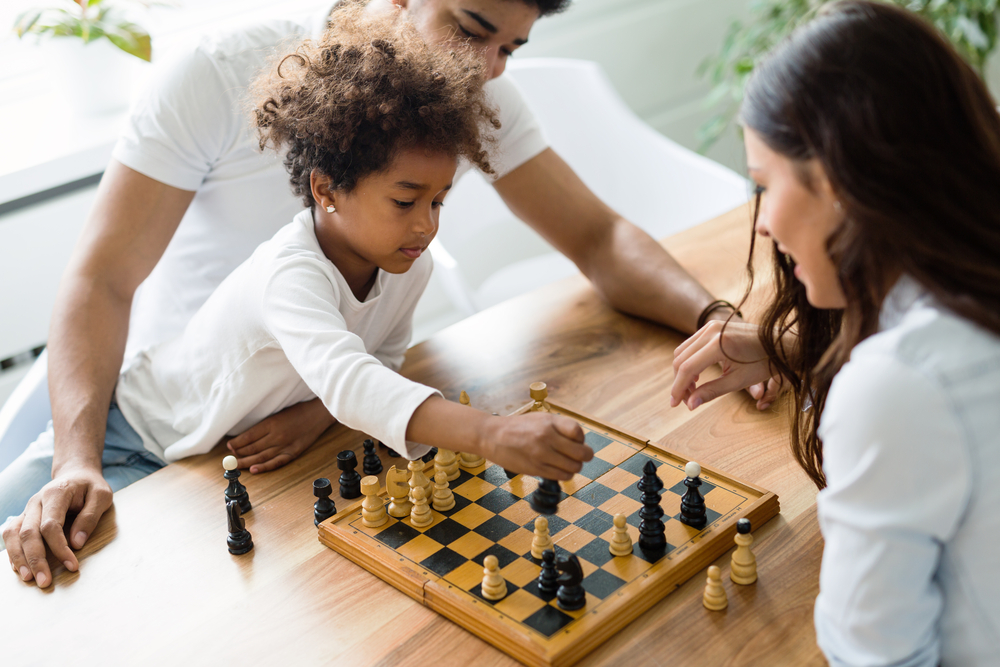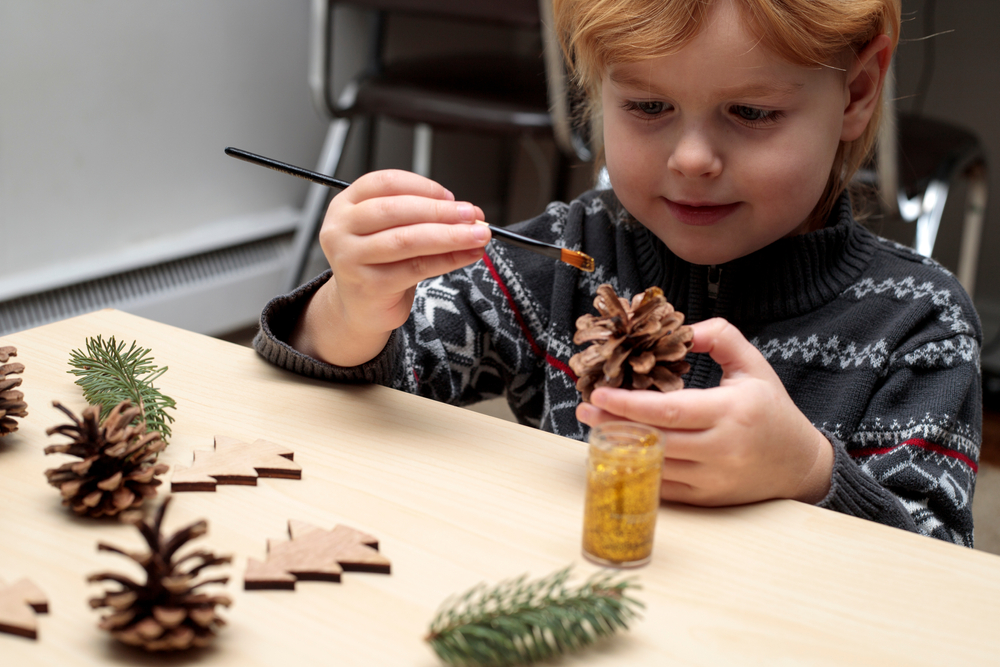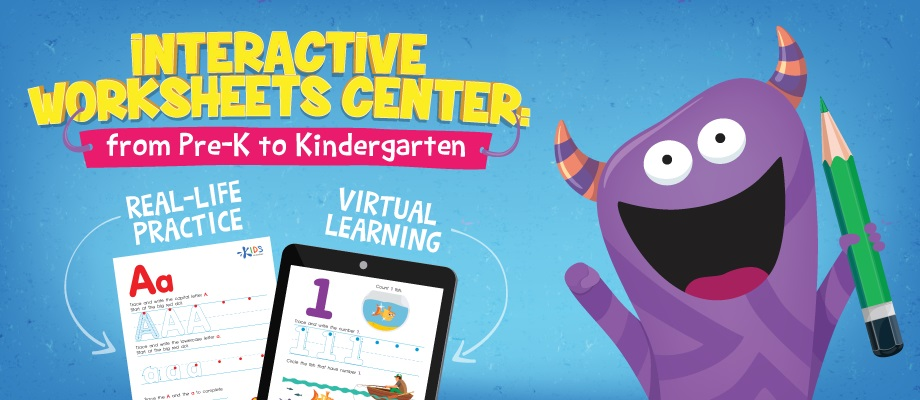Strategic thinking development Normal Worksheets for Ages 4-6
7 filtered results
-
From - To
Unlock your child's potential with our "Strategic Thinking Development Normal Worksheets" designed for ages 4-6. These fun and engaging worksheets are crafted to enhance critical thinking, problem-solving, and decision-making skills through interactive activities. Each page is filled with age-appropriate challenges that stimulate curiosity and creativity, helping children learn to think logically and strategically. Parents and educators can use these resources to promote independent thinking and improve cognitive skills in a playful manner. Foster your little one's strategic mindset while preparing them for future learning challenges with our thoughtfully designed worksheets! Explore, play, and watch young minds grow with Kids Academy.
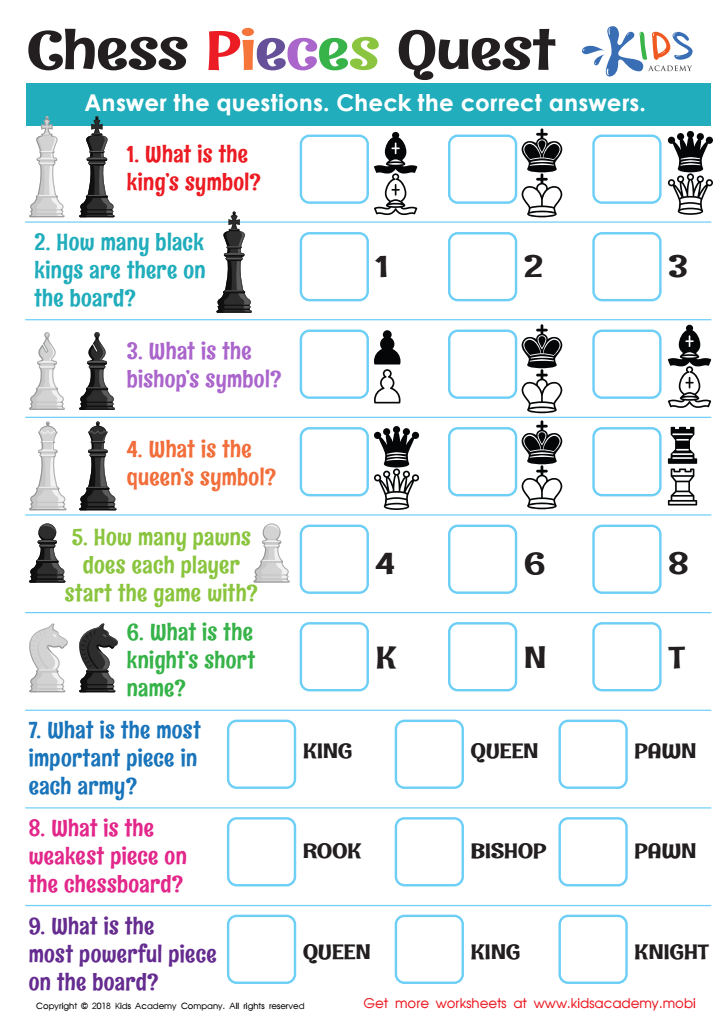

Chess Pieces Quest Worksheet
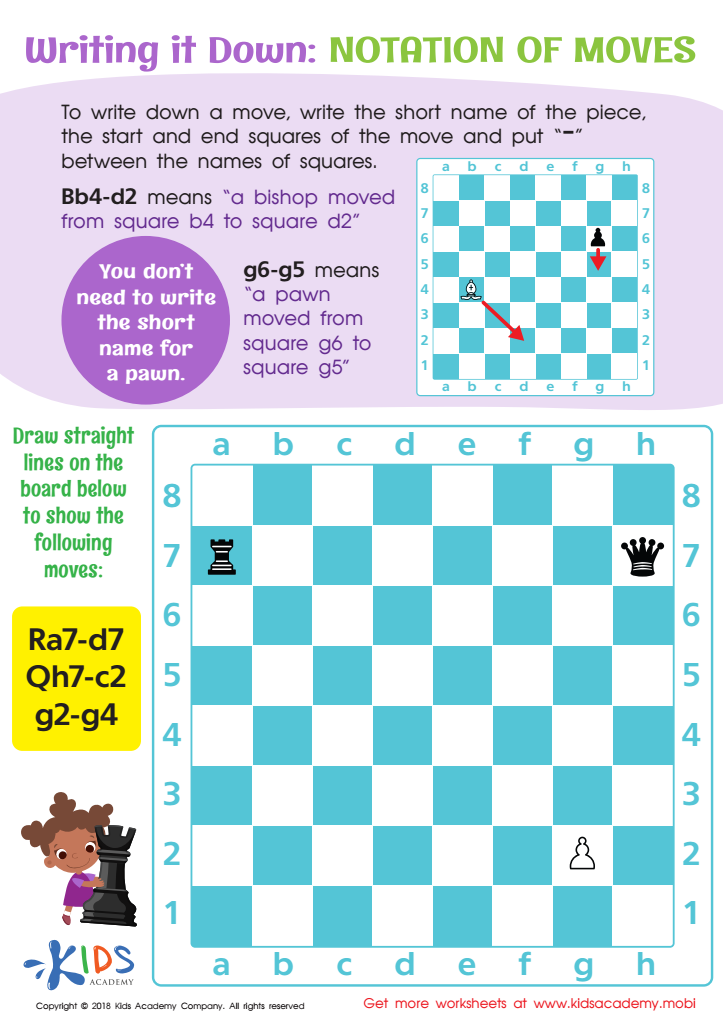

Notation of Moves Writing it Down Worksheet
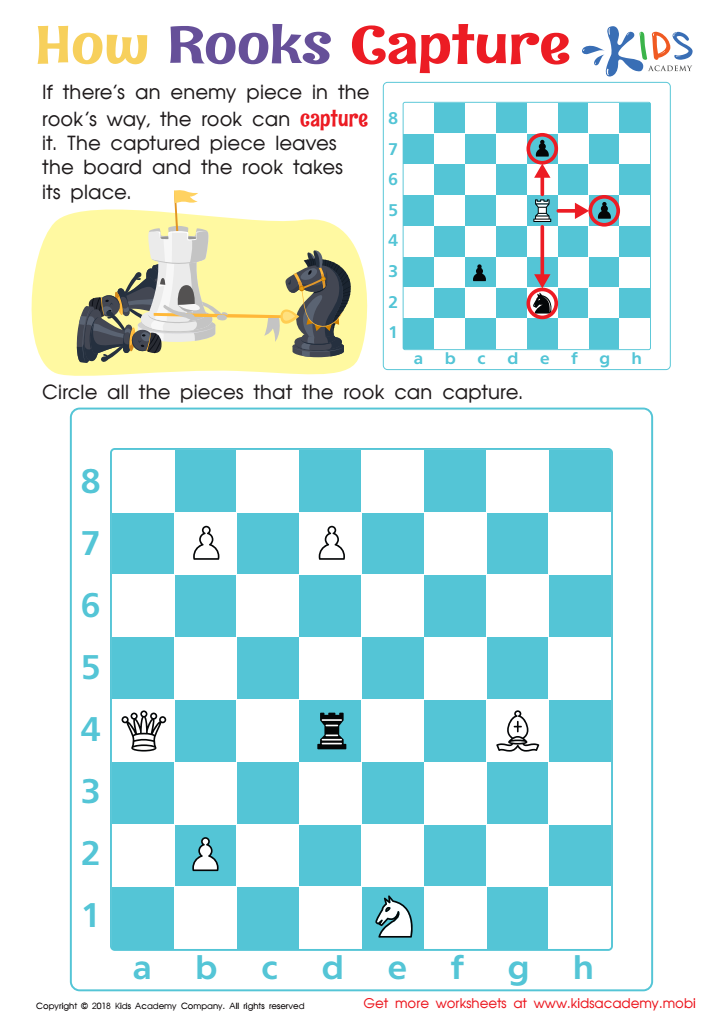

How Rooks Capture Worksheet
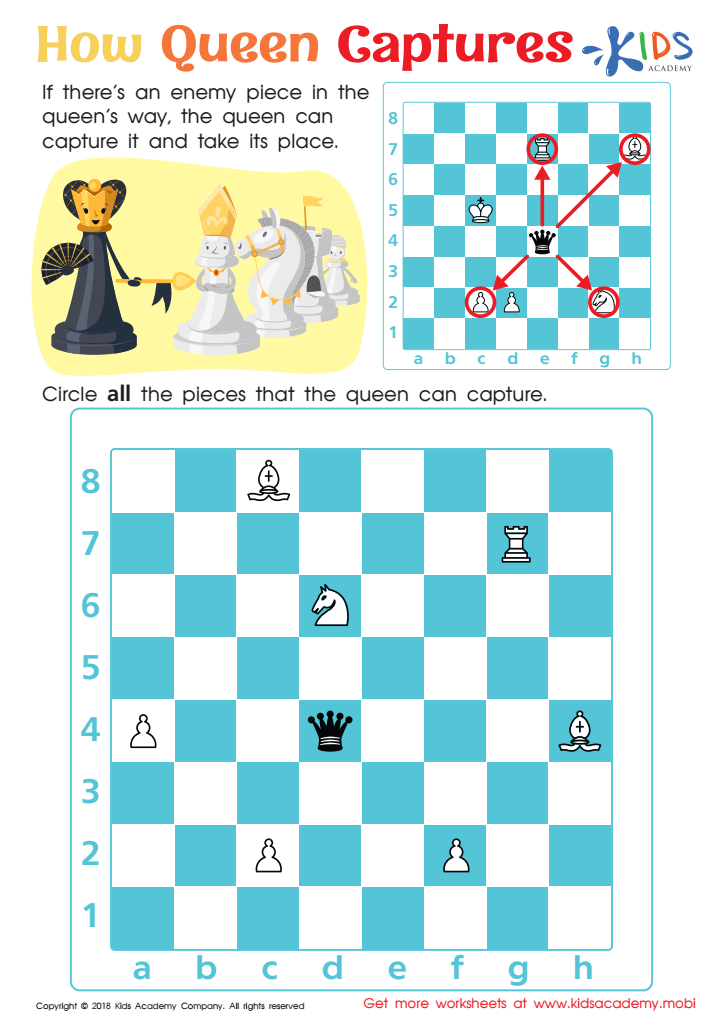

How Queen Captures Worksheet
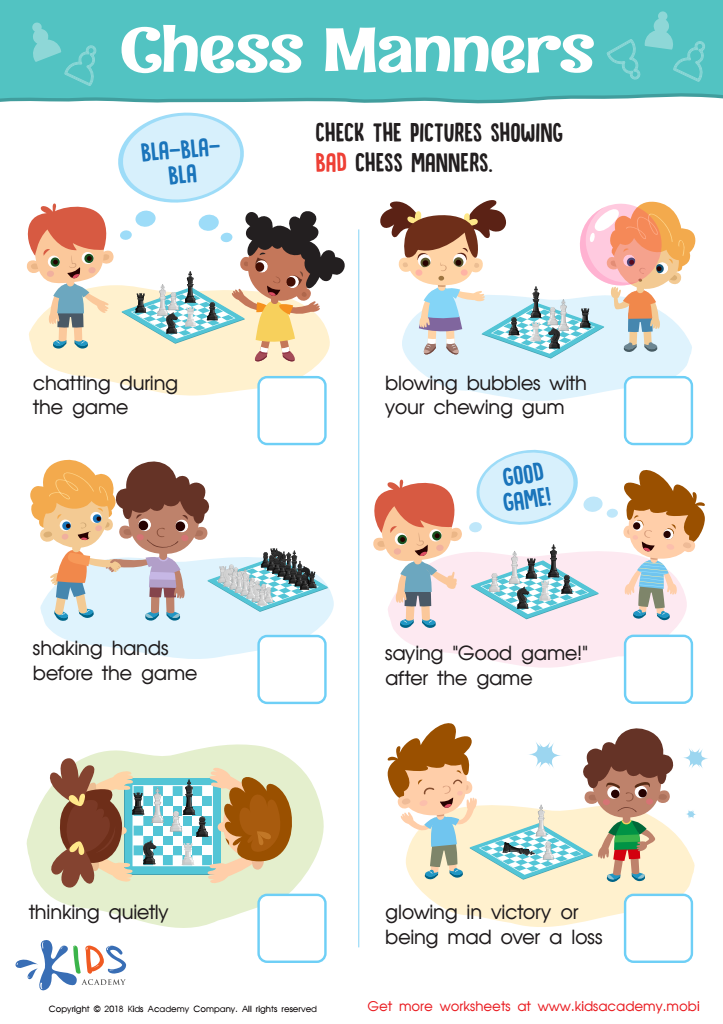

Chess Manners Worksheet
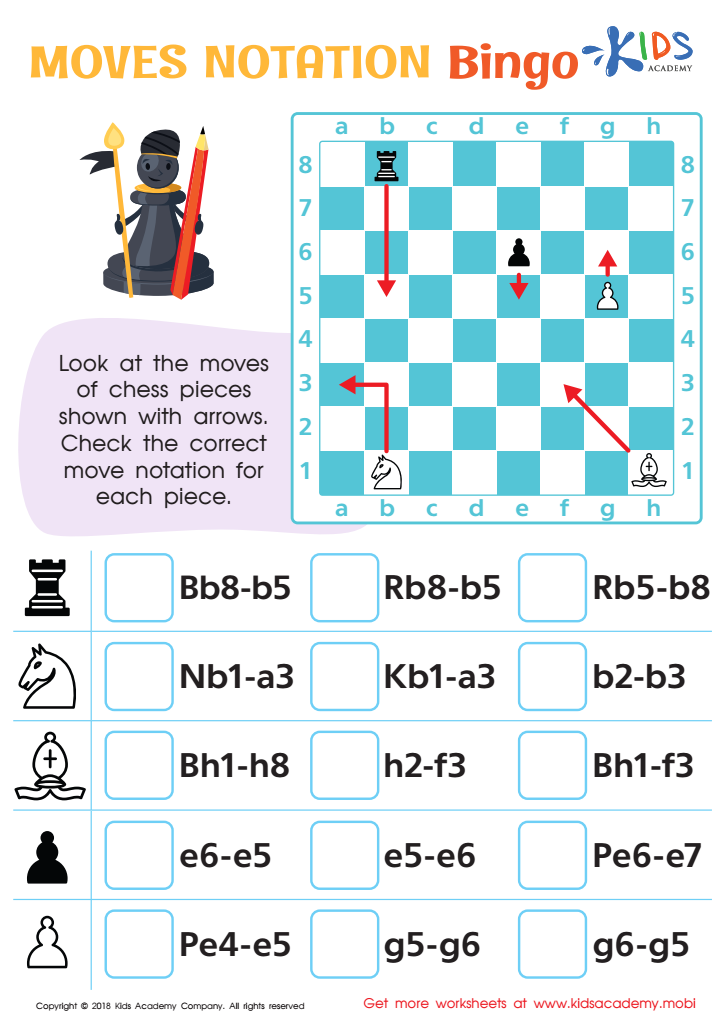

Moves Notation Bingo Worksheet
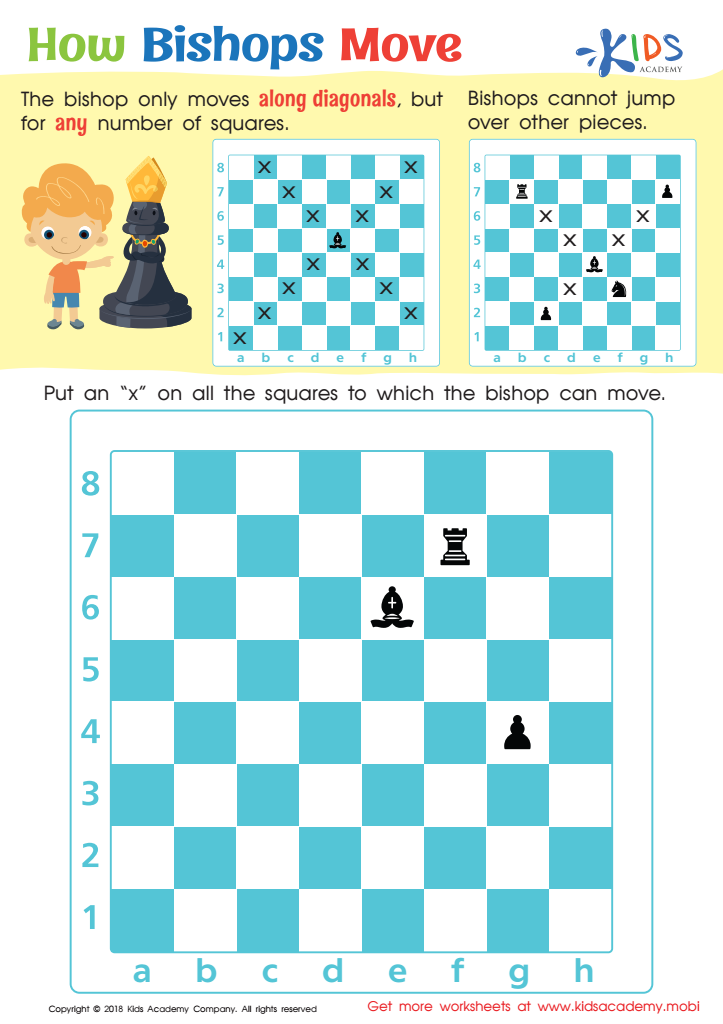

How Bishops Move Worksheet
Strategic thinking development in children aged 4-6 is crucial for their overall growth and future success. During these formative years, children begin to cultivate essential cognitive skills, such as problem-solving, critical thinking, and decision-making. Encouraging strategic thinking helps them navigate challenges independently and fosters confidence in their abilities.
When parents and teachers invest in this area, they lay the foundation for children to approach tasks methodically. Engaging children in activities that require planning, such as simple games, puzzles, or storytelling, nurtures their ability to think ahead and foresee consequences. This skill aids not only academic performance but also enhances social interactions; children learn to cooperate, negotiate, and resolve conflicts thoughtfully.
Furthermore, strategic thinking promotes creativity and adaptability, qualities that are vital in an ever-changing world. It prepares young learners to tackle complex situations later in life, whether in school projects or personal relationships. By emphasizing strategic thinking, parents and teachers empower children to become lifelong learners who can approach life's challenges with a thoughtful and informed mindset. Ultimately, investing in this developmental area shapes resilient, resourceful, and confident individuals ready to succeed in their futures.
 Assign to My Students
Assign to My Students




